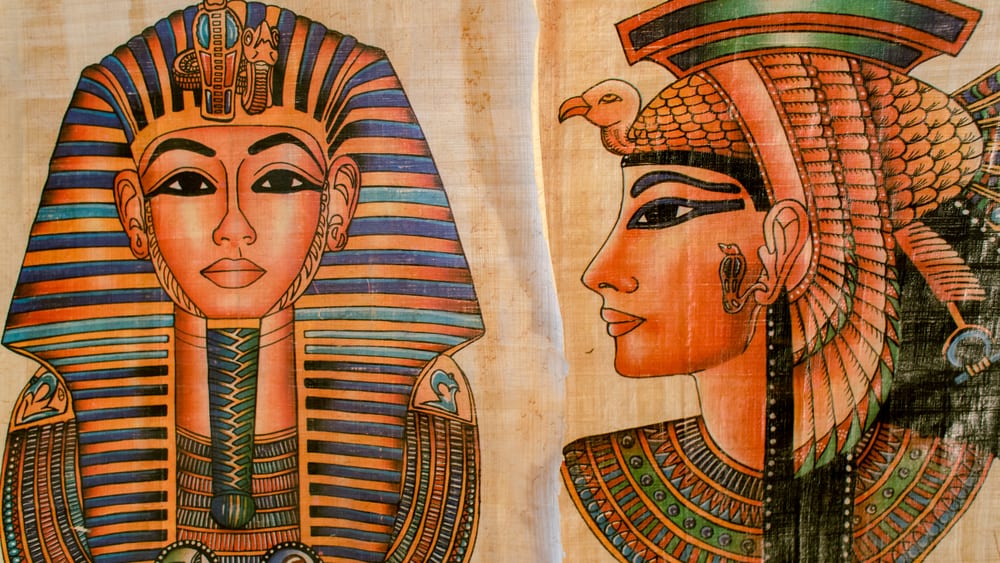
Who do you instantly picture when you think of George Washington, Cleopatra, King Tut, or Jesus Christ? Famous paintings, sculptures, and pictures in our history books have etched an image in our minds of how people from ancient times looked like, but this list will definitely challenge a few. Thanks to forensic scientists, researchers, and the latest technology, we now know more accurately what these people may have actually looked like, and you might be surprised to see.
How beautiful was Cleopatra in real life? Was Julius Caesar actually just an everyday Joe? Click through to decide how reality matches up with these works of art!
1. Julius Caesar
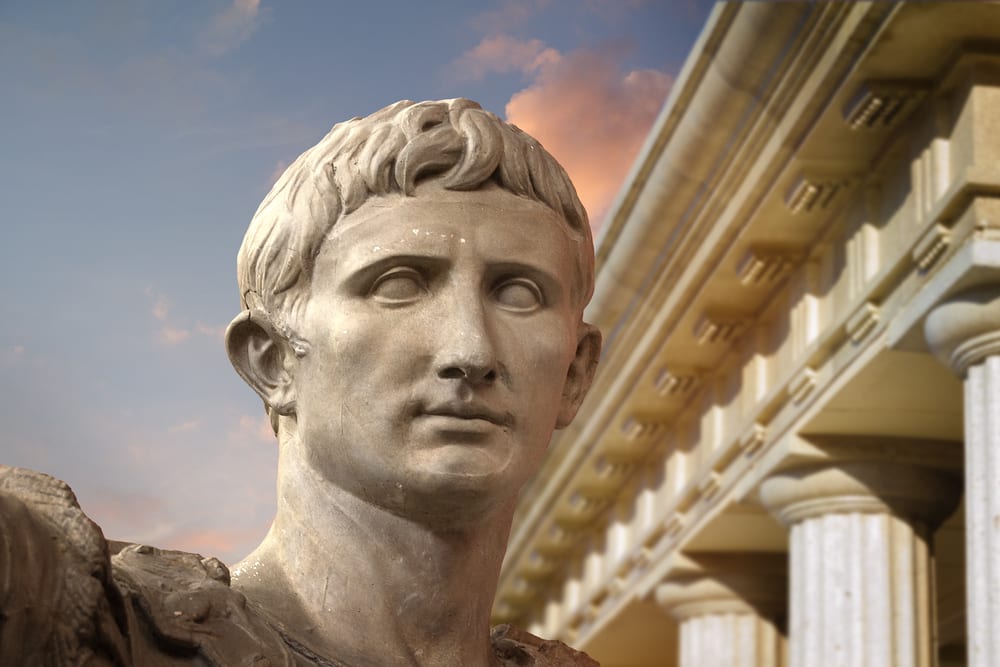
“I came, I saw, I conquered” are the famous words of Julius Caesar, the Roman politician and military leader of 100 BC – 44 BC. He became dictator of Rome the same year he was assassinated in 44 BC by a group of republican senators led by Gaius Cassius Longinus and Marcus Junius Brutus, in an act of violent betrayal.
Caesar is known for changing the course of history as he established a powerful Roman Empire, created what we know today as the 365-day calendar, and had the notorious Cleopatra as both a political alliance and his mistress, even having a son with her.
Reconstructed Head of Julius Caesar
Here is the face of the great Julius Caesar, skilfully reconstructed by Dr. Maja d’Hollosy, a Dutch archaeologist and anthropologist, along with a team of other experts. The 3D reconstructed head of Julius Caesar is on display at the National Museum of Antiquities in Leiden, the Netherlands.
The reconstruction reveals Caesar’s narrow eyes and large skull, possibly due to a skull deformation at birth. Also brought to life are his dark colored eyes, gray and white hair, and balding head – all what he would have looked like at the end of his life, before his assassination. Maybe not what you were expecting?
2. Cleopatra
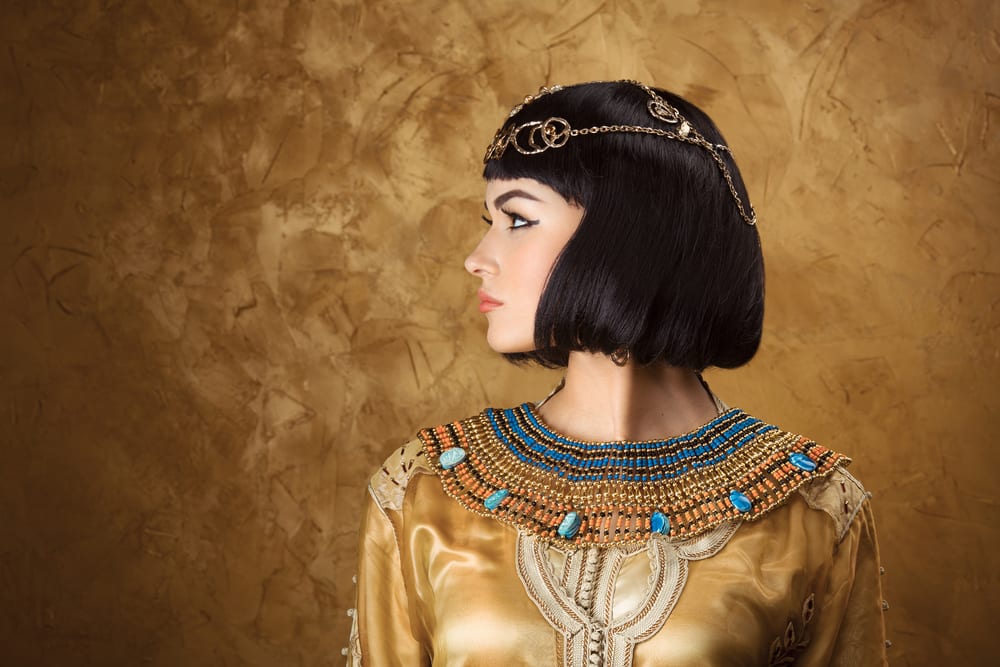
Her full name is Cleopatra VII Thea Philopator, but the world knows her simply as Cleopatra. Hollywood has portrayed Cleopatra as the beautiful, seductive Egyptian queen from 50 BC focusing on her love affairs with Julius Caesar and Mark Anthony. She is famous for using her powers of seduction to gain political power.
What’s interesting is that Roman literature first started depicting Cleopatra unfavorably as a temptress, not Hollywood. Authors such as Pliny the Elder, Virgil, Horace, Propertius, and Ovid perpetuated this portrayal of Cleopatra as a seductive queen, giving her quite the reputation. However, you’re about to find out that there was much more to this queen than looks.
The Queen of the Nile Revealed
Thanks to Hollywood, Cleopatra is remembered for her beauty and power of seduction, but you might be surprised to see a more realistic depiction of Cleopatra with a broad forehead and pronounced nose. In actuality, her beauty was not her biggest advantage, rather, it could be argued that her greatest asset was her intellect.
Cleopatra was a strong, brilliant leader who was well-educated and could speak nine languages. It was said that her intellect and charm was what made her so attractive, not necessarily her looks. It really changes how we view the great ‘Queen of the Nile’, doesn’t it?
3. Emperor Nero
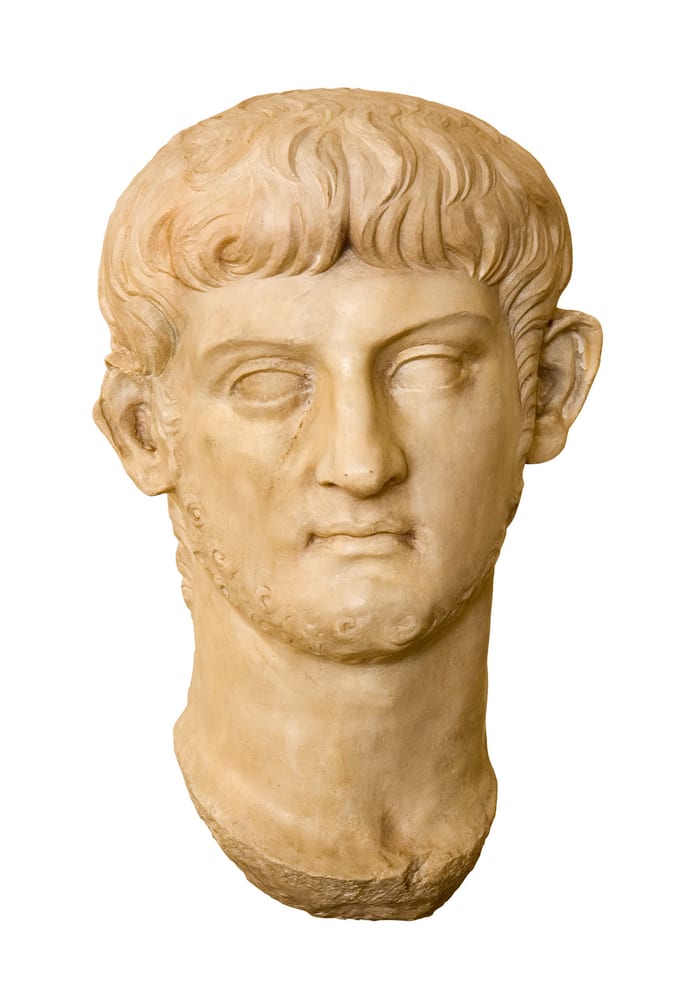
Regarded by some as the most evil man to ever rule Rome, Nero certainly has a reputation of infamy, brutality, and neglect. He was the emperor of Rome from 54-68 AD. The ones who were closest to him unfortunately were the victims of his wrath, including his mother, Agrippina, first wife Octavia, and possibly also his second wife, Poppaea, all who were killed by Nero.
Perhaps his most monumental fail was his lack of response to the great fire of Rome in 64 AD. He was reported to be singing and playing music as Rome was being burned to the ground. The fire lasted nine days and by the end of it, two-thirds of the city would be destroyed. What’s worse is that he blamed Christians for starting the fire and brutally persecuted them for it in twisted and unimaginable ways.
The Face of the Brutal Emperor
His reconstructed face looks much different than the marble statues that flattered him.
This 3D reconstruction of Nero was created by a talented Spanish artist based on sculptures, ancient coins, and written historical descriptions of the emperor. You may be surprised to see the red hair and freckles on the infamous ruler of Rome. The head shape (and double chin) are spot on with sculptures and busts of the emperor.
His eyes in the new model are a bluish gray color, agreed upon to be accurate by historic scholars. And skilfully portrayed is that fiery neckbeard – you don’t see that very often, do you?
4. Napoleon Bonaparte
A war hero in France during the French Revolution, and later the first Emperor of France in 1804, Napoleon greatly influenced the world as a military leader and French ruler.
Funny enough, Napoleon is remembered as being a short guy. Matched with his thirst for great power, this gave rise to the term “Napoleon complex”.
Artists had a hard time painting an accurate portrait of Napoleon because he wouldn’t sit still for long. He cared much more about his character being represented in works of art rather than an accurate depiction of his face. The above painting represents Napoleon as a man of strength, courage, and victory; exactly as he wanted to be remembered.
Death Mask of Napoleon Bonaparte
A death mask of Napoleon was made on May 7, 1821, shortly after he died at the age of 51 from stomach cancer. A death mask is a mold taken of the face promptly after one dies, made to preserve the face of an important person or leader. The mask was originally made by Dr. Francis Burton on the island of St. Helena where Napoleon was exiled. Copies of the mask were made by Napoleon’s personal physician, Dr. Francesco Antommarchi, and distributed in France, even some copies making it all the way to the United States.
The bronze mask reveals the true face of the famous leader from the French Revolution, highlighting his prominent French nose. And regarding his “short” height – in actually he was slightly taller than the average French man during his time.
5. Maximilien Robespierre
Another big player in the French Revolution was Maximilien Robespierre, a French lawyer and politician. His strong ideology and values had great influence in the French Revolution. However, it wasn’t long until his values came at a cost, as he began establishing himself more as a dictator than one serving the people. He is well remembered for his part in the “Reign of Terror” where his accusations of treason resulted in thousands of public executions.
Like many other prominent leaders, artists created works of art that highlighted Robespierre’s best features, rather than paint a true likeness. Click ‘next’ to see a more accurate reconstruction of the man behind the “Reign of Terror”.
3D Model of Robespierre’s Head
Robespierre’s death mask reveals the truth of what he actually looked like. In 2013, a forensic scientist worked together with a facial reconstruction expert to construct a realistic 3D model of Robespierre’s head. The result is quite different than the version portrayed by the artists of his time.
The death mask was created by the famous Madame Tussaud, who used the decapitated head of Robespierre after his execution from the guillotine on July 28, 1794. His death mask, along with recorded witness testimonies, reveal a slew of medical problems that he battled during his lifetime, including small pox, jaundice, and sarcoidosis, a rare auto-immune disease.
6. William Shakespeare

“To be, or not to be: that is the question” (Hamlet, Act 3, Scene 1). We all know William Shakespeare as a brilliant writer and playwright that has influenced the entire world with his plays and literary works. The playwright was born in 1564 and died in 1616.
When picturing Shakespeare, you most likely think of the image above, known as the Droeshout portrait from the year 1623. The portrait is not so much celebrated as a work of art, but more so for its accuracy of Shakespeare’s appearance. Click to see an even more accurate portrayal of the great William Shakespeare.
Facial Reconstruction of William Shakespeare
Popular in ancient times was the tradition of a death mask to preserve the face of a person shortly after they died. In a time before cameras, this was the only accurate way to remember loved ones. A death mask of what is believed to be William Shakespeare was discovered in Darmstadt, Germany in 1849.
Dr. Carolin Wilkinson from Scotland used computer technology to analyze Shakespeare’s death mask and to reconstruct the face of the beloved playwright to a more realistic version, pictured above. This would be a realistic interpretation of what William Shakespeare looked like at the age of 52 when he died.
7. Queen Elizabeth I
Elizabeth was 25 years old when she became queen of England in 1558, and reigned for 44 years until her death in 1603. This 44 year time period became known as the Elizabethan Era. Known as “The Virgin Queen” because of her choice not to marry or have children, she instead wore a ring on her ring finger to symbolize her marriage to England and its people. She brought much needed stability to the country during her time on the throne.
There are numerous portrait paintings of Queen Elizabeth I, which show her in beautiful, elaborate clothing and adorned in jewels. Consistent in all these portraits are her red hair and pale skin.
Lifelike Representation of Queen Elizabeth I
Inspired by perhaps Queen Elizabeth’s most famous portrait, the Armada Potrait of Elizabeth I, a British artist named Mat Collishaw, along with a team of designers, created a mask which reveals a lifelike representation of Queen Elizabeth I. Collishaw’s mask was on display at the Queen’s House art gallery in Greenwich, London in 2018. Created with animatronics, the mask moves in a way that brings the face of the queen to life, with moving eyes and mouth, as if she were right there in the room.
The mask represents the queen at age 55, the same time the Armada Portrait would have been painted. The portrait itself reveals a much younger looking Queen Elizabeth I, although she would have been middle-aged at the time. The queen wished to be painted as ageless and powerful in order to maintain her image of absolute authority. This mask is perhaps the closest we will get to knowing what she would have looked like later in life.
8. Mary, Queen of Scots
Another queen at the time of Queen Elizabeth’s reign was Mary, Queen of Scots, who reigned over Scotland from 1542-1567. The two queens were related, sharing the same family tree, but were also rivals, largely because Mary was next in line for the throne after Elizabeth. Due to a series of bad decisions and unfortunate events, Mary found herself fleeing to England and seeking protection from Elizabeth, her distant cousin. Elizabeth, however, felt threatened and had her imprisoned instead. She spent 19 years in captivity before she was eventually beheaded for treason at the age of 44.
Mary was celebrated in her youth for her beauty. She was quite tall, thin, and had beautiful red hair. Although her tragic fate is what she is remembered by the most.
3D Model of Mary, Queen of Scots
Dr. Caroline Wilkinson, a professor at the University of Dundee in Scotland, teamed up with an artist named Janice Aitken to create an animated reconstruction of Mary, Queen of Scots. Since no portraits of Mary exist between the ages of 19-26, they decided to create a 3D model of Mary of what she would have looked like at the young age of 25.
Wilkinson pointed out that her beauty was unconventional, with a large nose and pronounced chin, but her strong features, along with her fiery red hair and pale skin, was what made her so attractive in her time.
9. Jesus Christ
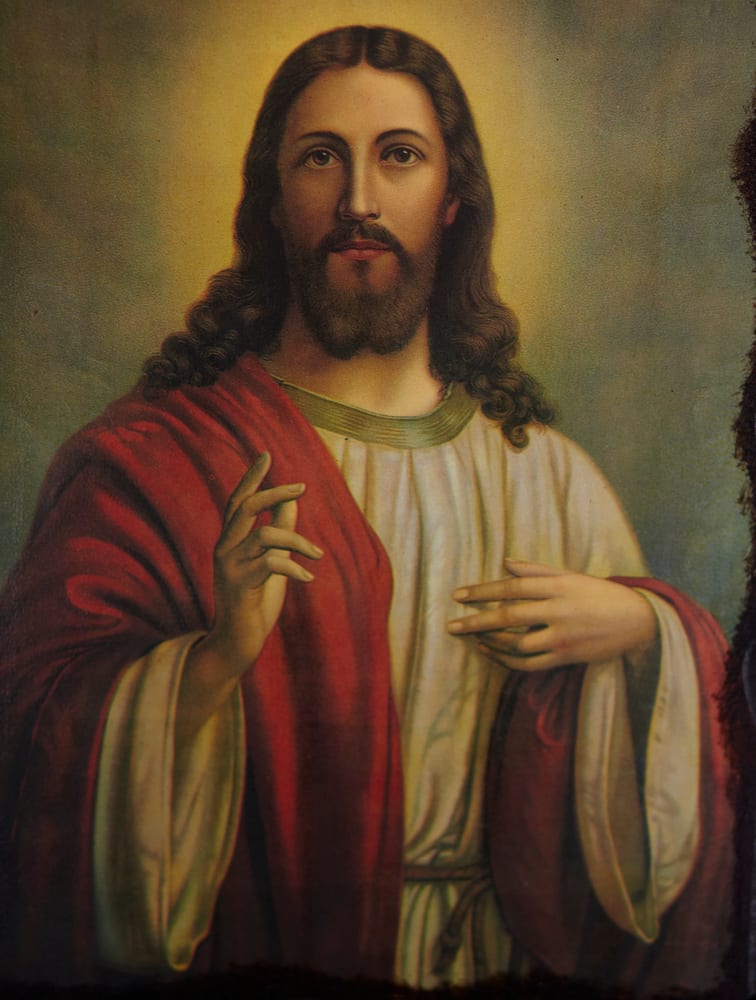
He goes by many names: The Light of the World, Lamb of God, the Alpha and the Omega. The man who split time from BC to AD, healed the sick, and turned water into wine – believer or not, you’ve heard of Jesus Christ, the Son of God.
There are countless amounts of paintings, sculptures, and other works of art that illustrate Jesus. Most all of these depict Jesus with long hair, fair skin, a beard, and a long flowing robe. However, historians and researchers will tell you that this westernized version of Jesus couldn’t be further from the truth.
More Accurate Portrayal of Jesus
Meet a far more accurate portrayal of Jesus. Jesus was Jewish, by blood and by heritage. A typical Jewish man in the times when Jesus walked the Earth had short hair, a shaven face, an olive skin tone, dark hair, and dark eyes. Philosophers at the time had short, scruffy beards, so it’s possible that Jesus had some scruff. But long hair and long beards were only present in the case when a Jewish man was fasting, and we know from the Bible and other historical records that Jesus was not in a state of perpetual fasting.
Back in 2001, Richard Neave constructed an image of a Galilean man based on three well-preserved skulls that were found by Israeli archeologists near Jerusalem. Using computer software, the team created a 3D model of what a typical Jewish, Galilean man would look like. Neave hopes this image will challenge peoples’ minds about how they picture the Savior.
10. King Tut
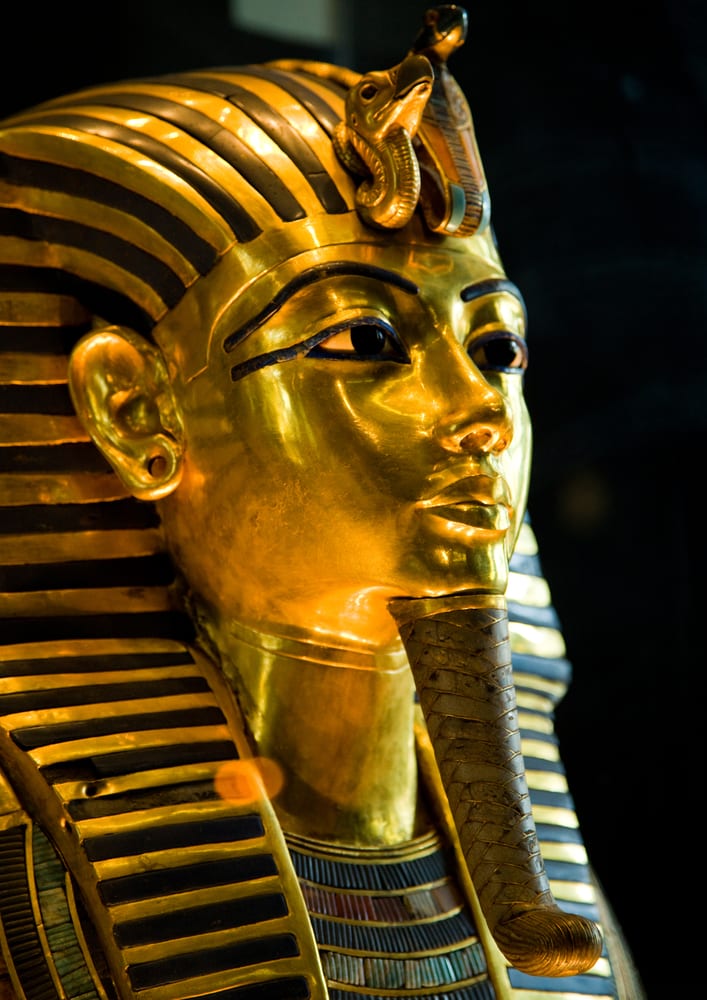
His full name is Tutankhamun, but we all know him as King Tut. He was the Egyptian pharaoh from approximately 1332 to 1323 BC and rose to power at only nine years old. There is not much remarkable about his reign, but the discovery of his tomb in 1922 by Howard Carter greatly expanded our understanding of Egyptian history and provided us with thousands of precious artifacts.
His gold burial mask (pictured above), made up of 20 pounds of gold, is the way that we remember King Tut in all his glory. But scientists have recently reconstructed the face of the boy king.
The Boy King Revealed
Because the tomb was untouched for over 3,000 years, forensic scientists were able to study King Tut’s mummy. Using CT scans and computer technology, scientists were able to create a reconstructed model of King Tut in 2014. Through studying his mummified body and DNA, scientists have been able to identify many health ailments that the king suffered from, including club foot, multiple bouts of malaria, and bone disease in the foot. Some of these health issues were likely due to the fact that his mom and dad were also brother and sister (very common in ancient royal families).
King Tut died at only 19 years of age. Many theories exist of why he died, but the most likely theory is that he died from an infection that developed after he broke his leg.
11. Nefertiti
The stepmother (or possibly even the biological mother) of King Tut was Nefertiti, an Egyptian queen married to pharaoh Akhenaten, born in approximately 1370 BC. Her and her husband ruled Egypt at a time when Ancient Egypt was at its wealthiest.
This beautiful portrait bust of Nefertiti was discovered in 1912 by German archaeologist Ludwig Borchardt, and captured worldwide attention for its stunning appearance. It is one of the most famous Egyptian artifacts and is on display in the Egyptian Museum (Neues Museum) in Berlin, Germany.
Nefertiti’s mummy was believed to be found in 2003 by Joann Fletcher, although there is much controversy on whether or not it’s actually the mummy of Nefertiti. Forensic scientists were able to make a 3D model of Nefertiti based on the remains found by Fletcher.
The Beautiful Queen Revealed
Here she is in all her glory. It took the team of experts more than 500 hours to complete this 3D model of Queen Nefertiti using 3D imaging technology. However, their hard work was met with a lot of criticism on one crucial aspect: her skin color. People from all across the globe have expressed outrage that the queen was reconstructed with such white, fair skin, and argue that the true Nefertiti would have had a much darker complexion.
Not argued with is the glamorous jewellery she’s adorned with, which was handcrafted by Dior and brings to life her power, wealth, and prosperity.
12. George Washington
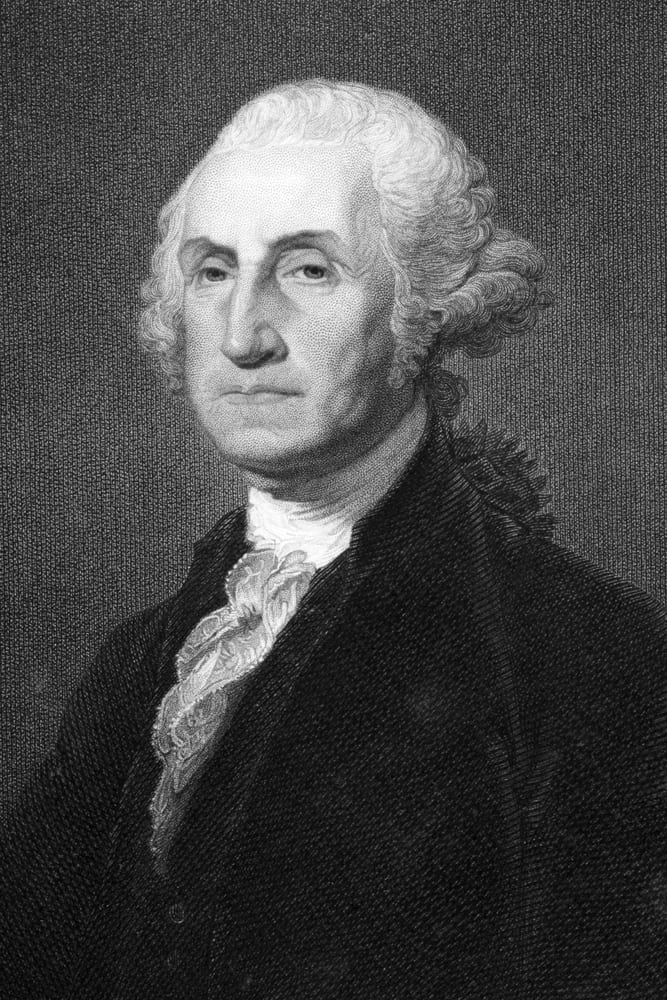
The first president of the United States of America, Founding Father, and brave general who led the United States to victory in the War of Independence, George Washington has a special place in history as a humble leader who stepped up to serve the new nation. He served as president from 1789 to 1797.
We all know his face from works of art, including his face being sculpted into a mountain on Mount Rushmore, but the most familiar place that millions of Americans see him everyday is on the US dollar bill. See how forensic scientists have reconstructed his face to look like.
George Washington Brought to Life
This amazing reconstruction was created by forensic anthropologist Dr. Jeffrey Schwartz from the University of Pittsburgh. He created three life size figures of Washington, representing him at ages 19, 45, and 57, which are on display at the Donald W. Reynolds Museum and Education Center in Mount Vernon, Virginia.
He didn’t have his actual bones to work with (those have remained buried), but he was given his sculptures, bust, life mask, and false teeth to create the reconstructed figures using 3D digital imaging. The results closely resemble the works of art that we know and love of the first US president.
13. Johann Sebastian Bach
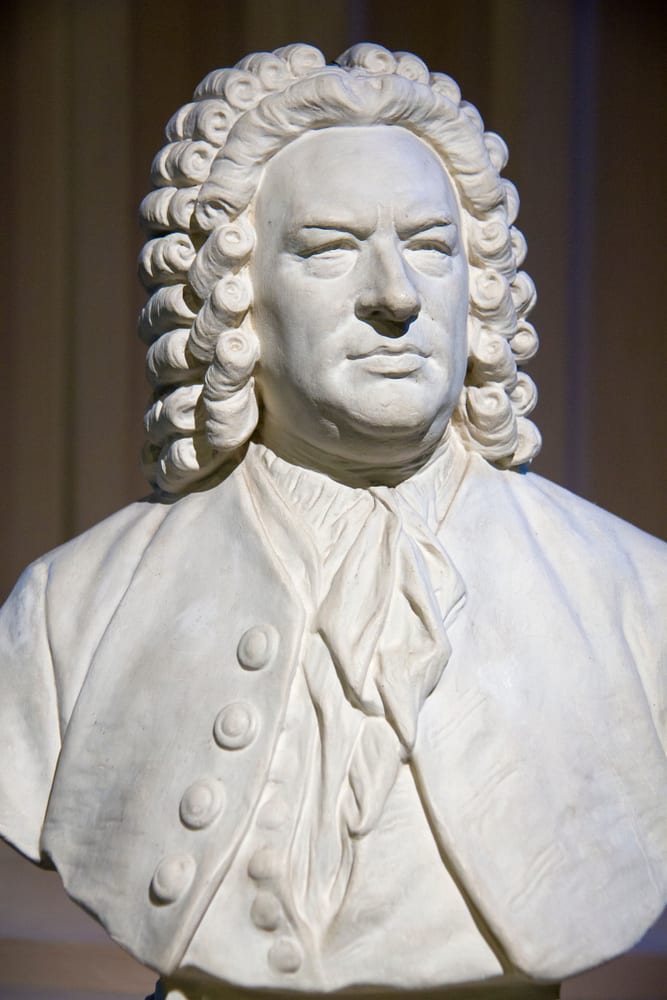
The legendary German composer whose timeless music has graced generations for more than 300 years now, Johann Sebastian Bach continues to be one of the world’s most famous composers of all time. Bach was born in 1685 into a family of musical talent, including his father, siblings, and uncles, but he outshined them all, becoming a master of his craft.
Although hundreds of portraits of Bach exist, it is reported by historians that Bach only posed for one of them. The Bach House museum in Eisenach (Bach’s birth place) asked the world renowned Dr. Caroline Wilkinson to show the world what Bach actually looked like.
The True Face of Bach
Dr. Wilkinson and her team have successfully brought the face of the great Johann Sebastian Bach back to life. Using a bronze mold of his death mask, which the team scanned with a laser to construct Bach’s head on their computer program, as well as portraits and historical documents, Wilkinson and her team had enough data to create an extraordinary likeness of the German composer.
Bach died in 1750 in Leipzig, Germany from a stroke following two unsuccessful eye surgeries that left him blind. Thanks to this 3D reconstruction of Bach, we can now put a more realistic face to his name and music.
14. Saint Nicholas
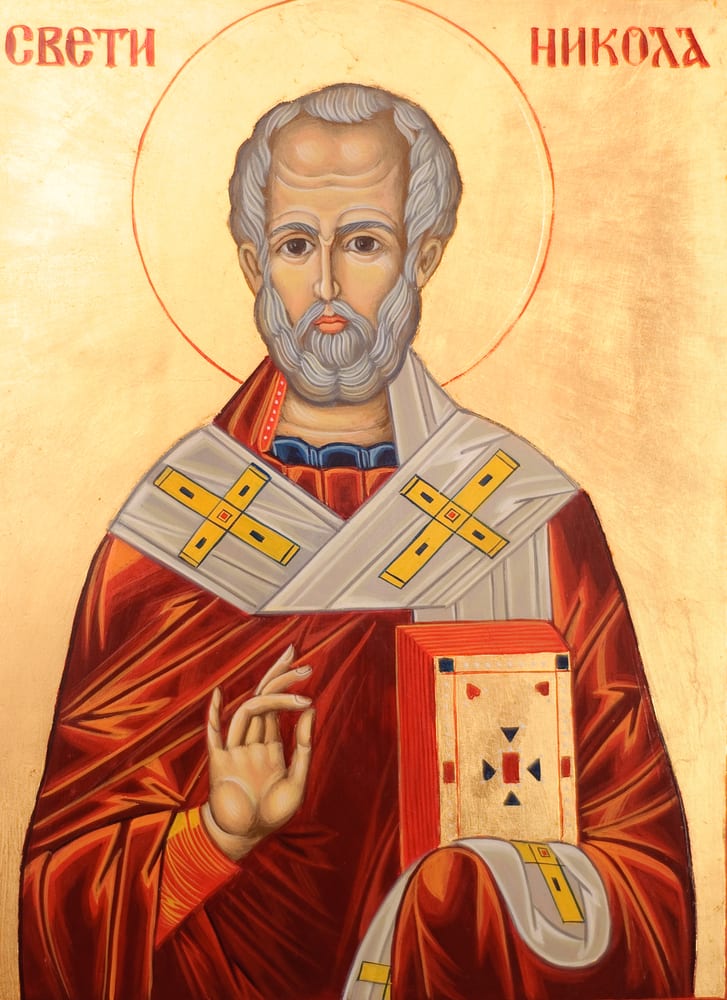
Born in the year 270 in the Ancient Greek city of Myra, which is modern day Turkey, Saint Nicholas and his love of giving gifts to those in need would influence the world forever. Seen pictured above in a red robe, white hair, and white beard, Saint Nicholas is the one who inspired the tradition of Christmas that we all know and love.
Saint Nicholas was a Christian Bishop who is known for his generosity to the poor. A famous legend told about him is when he snuck bags of money to provide a family with money for the dowry of their three daughters, otherwise the daughters were destined for a life of prostitution. This act of secret gift giving is what inspired the fictitious persona of Santa Claus.
The Real Saint Nick
Dr. Caroline Wilkinson was at it again. Adding to the growing list of facial reconstructions using the latest 3D imaging technology, Wilkinson and her team were able to bring to life the face of Saint Nicholas in 2014.
The image reveals a more accurate portrayal of what the real patron saint would have looked like. His skin tone is darker, reflecting his Turkish heritage. It also depicts his broken nose that healed unevenly, as the team realized by studying his skull. Still in common with artistic depictions of Saint Nicholas, and the modern day Santa Claus, is the full white beard.
15. Richard III of England

King Richard III reigned as king of England from 1483-1485, just two short years. He inherited the crown when Edward IV, his brother, died in 1483. King Richard died in battle in 1485 in the Battle of Bosworth, defeated by Henry VII (aka Henry Tudor) who would then take the crown.
Richard wasn’t such a nice guy – it is believed that he ordered the death of his two young nephews in order to protect his place as king. You might even be familiar with William Shakespeare’s play Richard III which depicted him as quite the villainous monster, strengthening his poor reputation with the public.
The Real Face of Richard III
This reconstruction depicts Richard III as anything but monstrous, at least in appearance. Performed by forensic anthropologist Caroline Wilkinson and her team at the University of Dundee, the reconstructed bust reveals a handsome face and facial features consistent with painted portraits. CT scans and 3D printing were used to construct this lifelike figure, while team member Janice Aitkin styled his hair, eyes, and clothing based on portraits of the king.
Interesting fact is that the remains of Richard III were thought to be lost, as it was falsely told in history that his body was thrown into a river. However, in 2012 the remains were found in a search by archaeologists that led them to a parking lot in Leicester, England. There, under the parking lot, they found his remains. DNA evidence confirmed the body was that of Richard III.
16. Henri IV of France
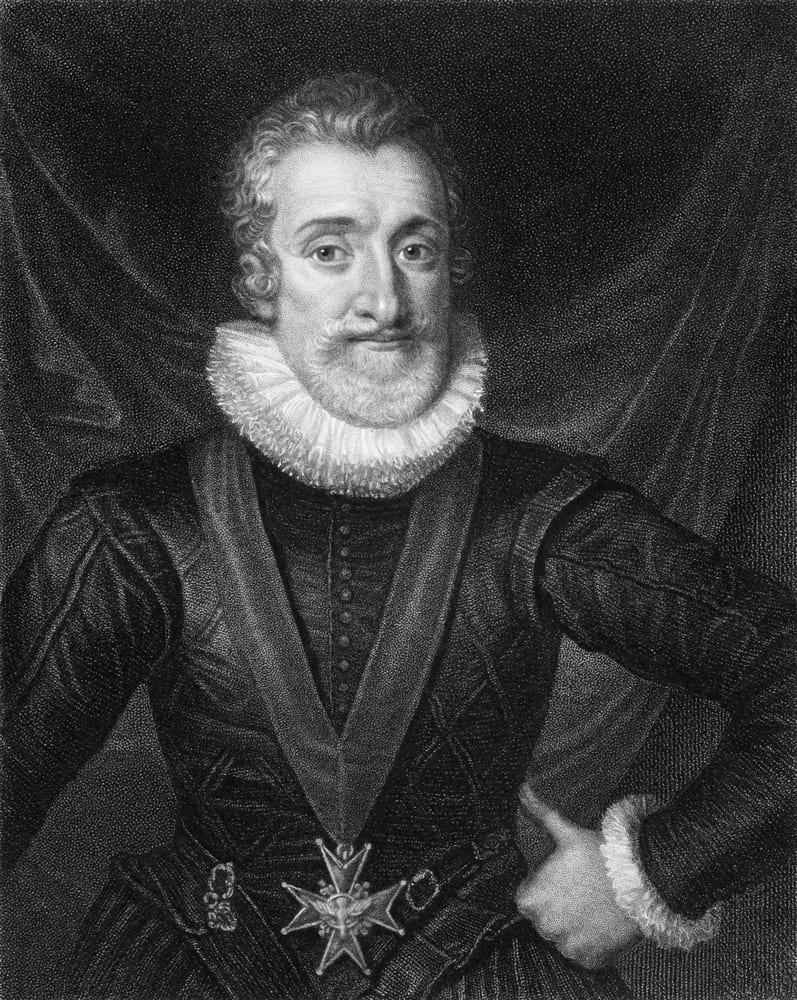
Also known by his nicknames “Good King Henri” and “Henri the Great”, Henri IV was king of France from 1589 to 1610. The French king was quite progressive for his day and age, granting religious freedom to Protestants, promoting education, and even working to preserve the environment.
This progressive mindset, especially that of religious tolerance, made him an enemy to many. He survived numerous assassination attempts until in 1610 when he was assassinated by Francois Ravaillac in his coach while stopped in traffic.
In the above portrait, Henri IV is displayed as distinguished, well groomed, and with a slight smile.
Henri the Great Revealed
Thanks to 3D imaging technology, the face of King Henri IV has been brought to life nearly 400 years after his death. Two French experts, Philippe Froesch and Philippe Charlier, worked together to create this impressive reconstructed bust. The result is a striking resemblance to the works of art of the beloved King of France.
A little fun fact is that King Henri IV was reported to have horrendous hygiene, smelling like “garlic and feet” according to historians, like many other Europeans in this time period. Good thing this likeness of Henri IV doesn’t also bear the scent of him.
17. Simón Bolívar
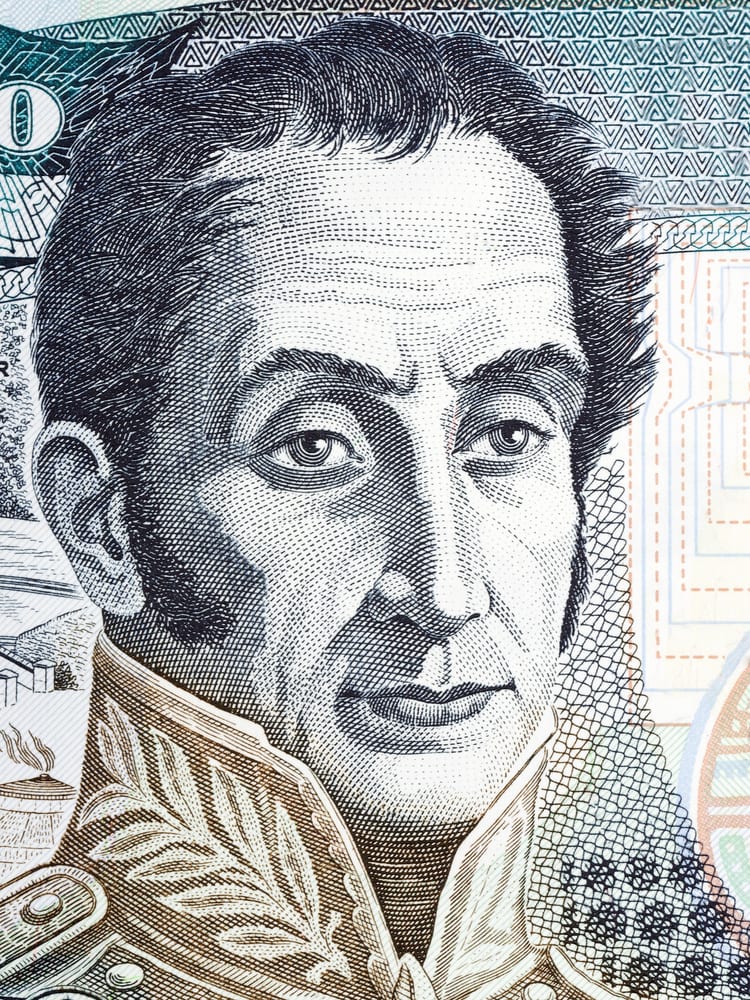
A Latin American hero, Venezuelan born Simón Bolívar was a military general and political leader who led the fight for Independence against Spanish control of Venezuela, Bolivia, Colombia, Ecuador, Peru, and Panama. Nicknamed the Liberator (“El Libertador”), Bolívar fought in 472 military battles, and remains a legend around the world for his bravery, intelligence, and leadership. Bolívar was born in 1783 and died in 1830 of tuberculosis at 47 years old.
Countless statues of Bolívar, many of him riding a horse, can be found all over Latin America and even one located in Central Park in New York City.
The Liberator Reconstructed
This incredibly lifelike computer generated portrait of Simón Bolívar was requested by former Venezuelan president Hugo Chávez in 2010, and completed in 2012.
The remains of the Liberator were unearthed in 2010 under the direction of the Venezuelan government. The same French forensic artist, Philippe Froesch, who reconstructed the face of King Henri IV, was the expert behind the 3D reconstruction of Simón Bolívar. The result is a handsome face, styled with hair and clothing to resemble the historically documented Venezuelan hero.
While some controversy has sparked since the unveiling of the image, many are happy to have a tangible, human picture of what the beloved hero for independence actually may have looked like.
18. Nicolaus Copernicus
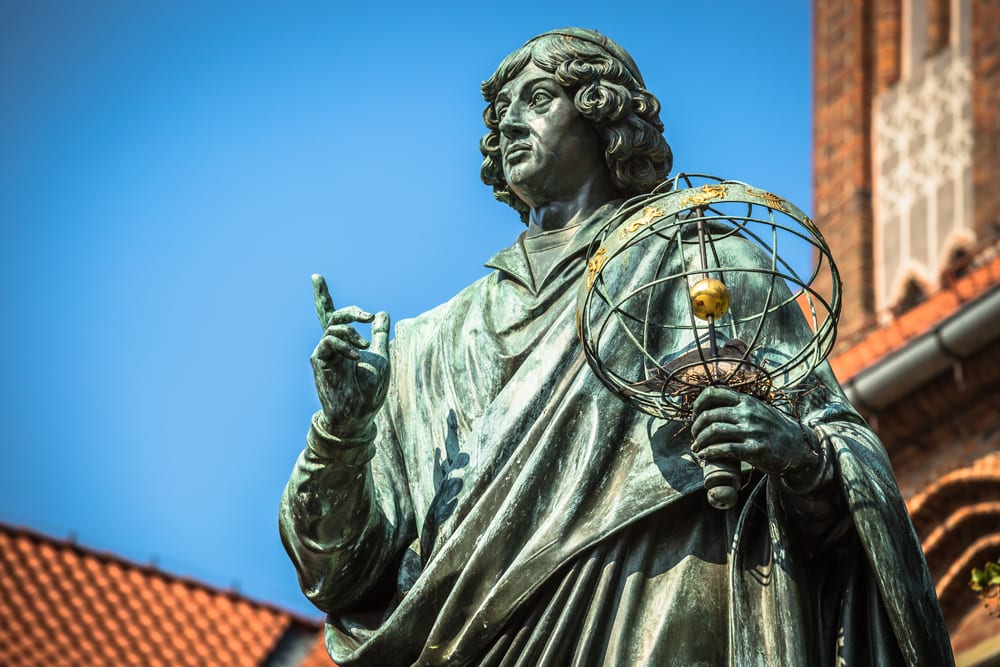
Polish born Nicolaus Copernicus (1473 – 1543) was the brillant astronomer and mathematician who first recognized the sun as being the center of our solar system, rather than the Earth. At that time, it was widely believed that everything revolved around the Earth, called the geocentric model, a view that was supported by the Church. Called a fool and a heretic, Copernicus’ work would not be appreciated for about another hundred years.
The remains of Copernicus were found in 2005 at a cathedral in Poland, confirmed by matching DNA. Click to the next page to see the revolutionary astronomer’s reconstructed face.
The Great Astronomer Revealed
A broken nose, a scar on his forehead, and pictured at age 70, the time of his death, forensic scientists from Warsaw in Poland present us with the face of Nicolaus Copernicus. It took archaeologists two years to find and uncover the remains of the astronomer, which were finally found under the floor of a cathedral in Frombork, a small Polish town. Matched with the DNA of a few hairs of Copernicus found in one of his books, scientists were able to identify his remains with certainty.
The reconstruction resembles portraits of Copernicus and gives us a lifelike face to remember the man who inspired modern astronomy.
19. Stonehenge Man
Pictured above is the reconstructed face of a Neolithic era man found near Stonehenge in Wiltshire, England. The well-preserved tomb containing a 5,500 year old skeleton, originally found in 1863, has provided scientists with valuable information on Neolithic people and even Stonehenge itself.
This impressive reconstruction was done in 2013 by Oscar Nilsson, a sculptor and archaeologist from Sweden. Examination of the skeletal remains identified the man to be between 25-40 years of age and of muscular build, which Nilsson depicted in his reconstructed model. The man is portrayed to be of Celtic ancestry, as seen by his red hair and fair skin.






